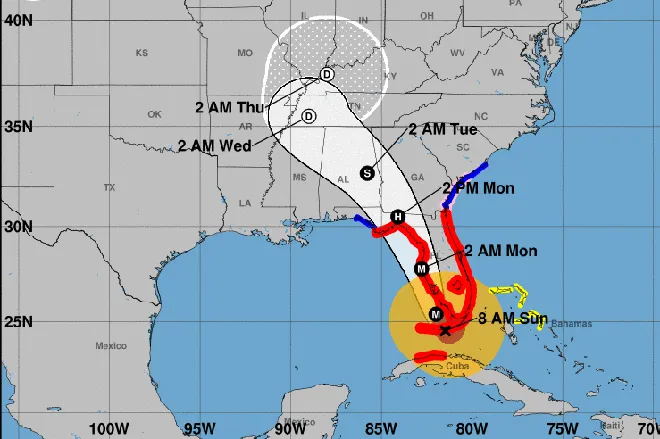
Sunsets, Wildlife and Limited Care: Challenges of Aging in Place in Rural America
Tehachapi, California, residents Mike and Joan McNatt discovered a quiet and welcoming town in 2007, nearly 150 miles from their former home. The empty nesters were attracted to the diverse climate, picturesque views and making a forever exit from the urban congestion.
While Mike was still working at the time, Joan discovered volunteer pursuits with her new faith community. The couple spoiled their rescue dogs, Pilgrim and Molly, and settled into a peaceful new chapter.
The town, located in Kern County, had every amenity they wanted or needed. Shopping, restaurants, talk of a new hospital and in lieu of living eave-to-eave back in the city, the pair met new neighbors of elk, deer and bobcats.
Married 43 years at the time, they had their own reasons for relocating to a rural town. Mike desired a change in scenery, opting for more open space than a shared one. Safety was the number one factor for Joan, who experienced three break-ins at her urban home.
With four seasons, including snow, high winds and frequent Tule fog, the couple’s romantic journey moving to this rural locale did not provide much time to explore transportation options aside from their personal vehicles. Stunning sunsets and privacy outweighed any additional research into what medical care looks like in a new town. A relative good health and mobility did not present the roadblocks of the future that aging in place in a rural community can present.
According to Jeremy Oliver, Director of Kern County’s Aging and Adult Services, it’s hard to pinpoint the exact number of rural seniors being served due to the varying definitions of rural is.
Despite those gray areas, Oliver and his team recognize the challenge that not all of their programs serving seniors over age 60 can reach every county resident. For example, the Meals on Wheels program experiences obstacles delivering to older adults who reside in extreme remote areas that lack adequate road access, Oliver shared. On the other hand, his agency will respond to any allegation of abuse or neglect – no matter the location, he assured.
Closing these service gaps and others is a priority as seniors are projected to represent 40% of rural households by 2030, according to the Urban Institute. In California, where Mike and Joan live, the projected increase in the older adult population by 87% in 2030 will result from the Baby Boomer generation fully reaching retirement, the Public Policy Institute of California cited.
As a result, the current landscape of healthcare options, transportation, food access, and viable community resources needs to responsively change to this fast-track pace of aging in rural America.
It's not a mystery that older adults prefer to live in their own home. Aging in place offers longevity and is more cost effective vs. the expensive retirement options that hospital social workers often give you on a flyer upon discharge.
I know this because I am Mike and Joan’s oldest daughter.
"Why aren't your parents living closer to you?" is often the very first question a hospital social worker asks me during the discharge process for one of my octogenarian parents. "Why don't they live in Assisted Living?" is another one. The questions are likely protocol, but the tone and approach sting every single time.
My story is not unique. The number of aging individuals living in rural communities is going to grow and how community-based organizations respond will be crucial. From housing, transportation, healthcare and, for many, income gaps that force them to choose medications over groceries will have to be addressed.
The U.S. Department of Agriculture’s Rural Development, which offers more than 70 programs, is taking action to respond to this increase in older adults in rural communities.
“Among other things, these programs increase access to affordable housing, healthy foods and quality health care…” an agency spokesperson said in an email. As examples, the spokesperson pointed to the American Rescue Plan and Bipartisan Infrastructure Law with provisions to bolster rural hospitals and health care providers and expand access to high-speed internet in rural America
In Kern County, Oliver's team is reviewing the state’s Master Plan for Aging and the California 2030 Recommendations For A Future-Ready California Aging Network. Both blueprints are accompanying their efforts to support 25% of the state’s population who will be 60 and over by the next decade.
One adjustment already in place is the expansion of Medi-Cal (California’s Medicaid program for low-income individuals) which offers a significant boost in opportunities for persons to receive services that previously would have been ineligible, he shared.
Across the United States, there are 622 different Area Agency on Aging commissions, 260 Title VI Native American aging programs and 56 state Agencies on Aging. You can find yours by zip code here.
Oliver wants to dispel the myths that his county’s agency services are only for seniors experiencing poverty when in fact, they serve everyone regardless of income. Some services have some eligibility requirements, but for other programs like Health Insurance Counseling and Advocacy Program (HICAP), which assists people with accessing, understanding and navigating their Medicare benefits, there are no requirements, he added.
Family caregivers can remotely assist their older parents who live in rural communities through free resources, like the one I enrolled in through ElderHelp of San Diego. Here I learned how to support my parents from afar and identify services that they could tap into when needed.
What we discovered through trial and error was that although transportation is listed as an eligible benefit under my parents’ insurance plan, third-party drivers will not travel to their home. This is the case for private caregivers, too, given the cost of gas to drive to a less populated community. I remember being told it is cheaper to have someone spend the night for $300.00 to assist my parent with a hospital discharge than offer a few hours of caregiving during the day.
My parents recognize now that healthcare, transportation, and access to grocery shopping are key elements as they continue to age in place. With limited mobility, they both stated how their world has become more isolated, where they now pick up groceries ordered online, as opposed to the activity of leisurely shopping.
Joan no longer volunteers at church and many of her connections there have also diminished. Isolation takes on a physical meaning as well as manifesting itself in emotional ways, which will be central to addressing the urgent needs as the population of older adults living in rural towns continues to rise.
This article first appeared on The Daily Yonder and is republished here under a Creative Commons license.![]()
















